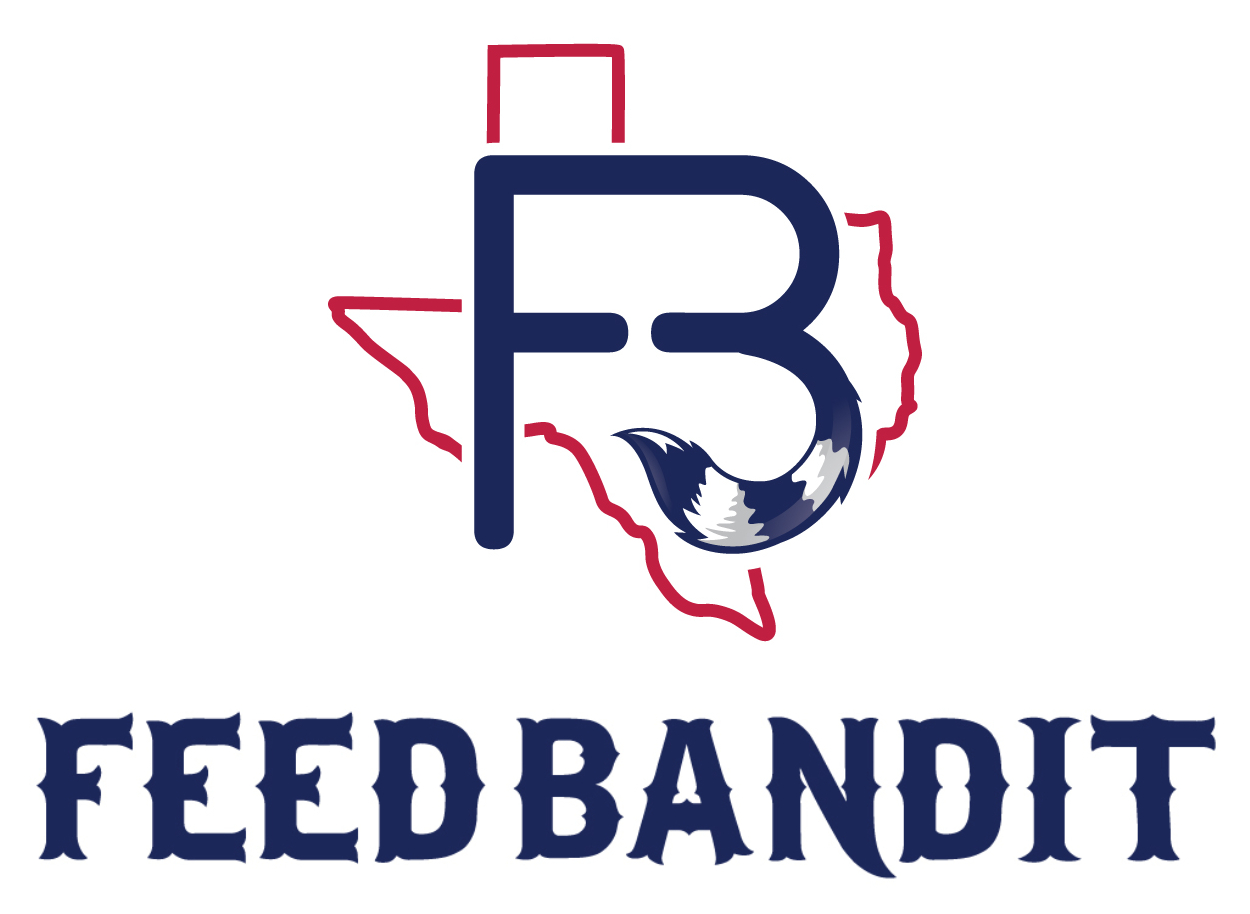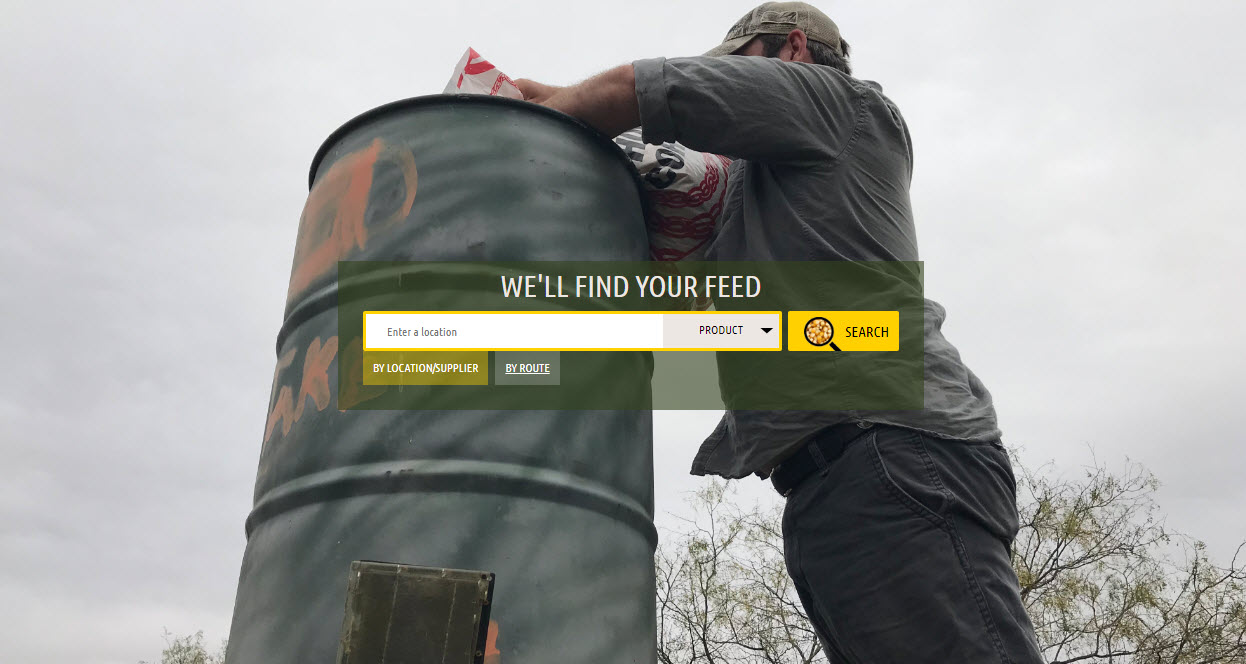
Deer feeders are a very convenient and efficient way to help attract deer to your property and once they are there help retain them close to the location of your choosing.
In this article we discuss what we’ve learned over the years about the basics of deer feeders such as:
- What is a deer feeder?
- Where you can and can’t use deer feed
- Types and parts of a deer feeder
- Varmint or raccoon guards can save you money
- Do it yourself idea for making a deer feeder
- Helpful things to consider when setting up a deer feeder
- Which feeder is right for me in my scenario?
- Where to find deer feeders
What is a deer feeder?
A deer feeder can be considered any contraption used to distribute food to deer to consume. When people hear the term deer feeder they typically think of the standard spin feeder on 3 or 4 legs set to go off and throw out feed at certain times during the day.
They can also be what are sometimes called free choice feeders. These feeders make available a steady amount of feed to the deer whenever they are ready to eat.
Deer feeders can be filled with a wide variety of deer feed such as corn, protein mixes and pellets, beans, peas and other seeds.
Where you can and can’t use deer feed
Before considering setting up a deer feeder though please be sure to check your local deer feed regulations to make sure you are able to feed in your area.
Every state has it own hunting regulations and unique quirks that range from absolute hard bans on the use of any form of deer feed all the way to extremely lax regulations on its use.
As an example Texas has always had the reputation of being one of the most laid back states when it comes to deer feeding and some states like Colorado and Montana totally ban it.
How well do you know the deer feeding regulations where you hunt? If you’ve never taken the time to look them up it can be harder than you think to find and understand them.
Luckily we’ve done all that for you in our comprehensive review of Where You Can and Can’t Feed for Deer. Take a quick moment to refresh yourself as it is important to get familiarized with your state’s regulations so you don’t run afoul of the law.
Types and parts of a deer feeder
Deer feeders come in a wide range of sizes and types such as a little 50lb backyard hanging spin feeder, wooden trough style feeders to a 1,000 lb free choice feeder and everything in between. While the types can look and act very differently they tend to share in some basic parts and accessories.
A typical deer feeder at the very least has a reservoir to hold the feed for distribution and a mechanism to distribute that feed.
The reservoir can be a fabricated container made of galvanized steel or other durable metal to withstand the elements, a 55-gallon drum, or it could be a wooden trough designed to fit in better to the environment.

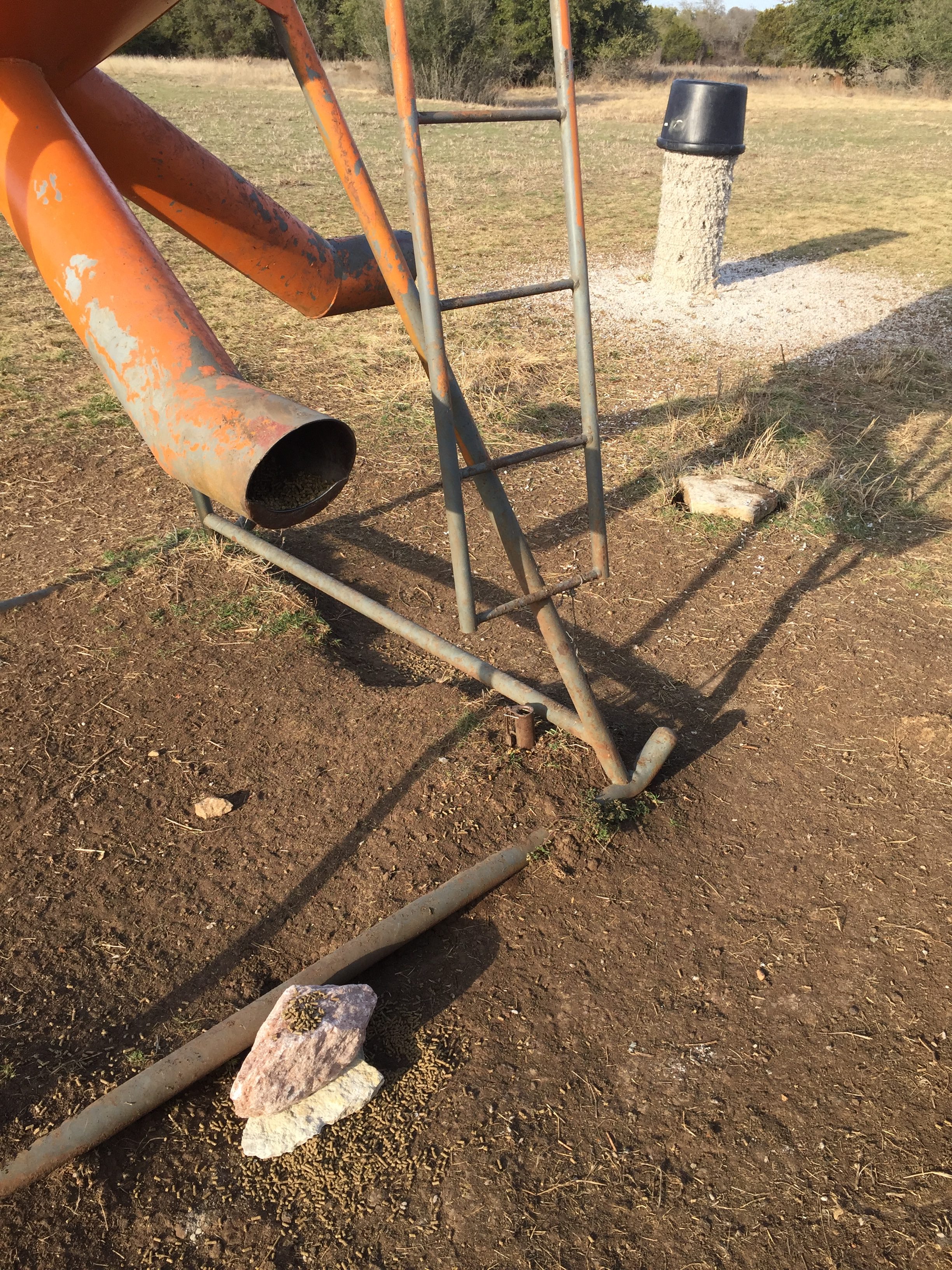
If the feeder is equipped with a spinning mechanism then it will probably come with a timer which allows you to schedule your spins typically up to at least 4 times a day. They will also have a solar panel connected to a 6 or 12 volt battery which runs the spinner. (TIP: point the solar panel towards the south so as to get the maximum amount of sunlight hitting the panel during the day.)
Feeders can stand on legs or they can be hung from any number of contraptions such hanging poles or from tree branches. Feeders on legs will typically have 3 or 4 that are either independent and staked into the ground or are mounted on skids to make moving the much larger and heavier feeders easier.
These feeders can have a ladder welded onto one side or have a removable ladder to aide in filling. Some don’t come with anything so you’ll have to get creative such as standing on the tailgate of your truck or just bringing out your own ladder.
Feeders hung from above can be supported by tri or quad pods with a manual gear winch or pulley system to help hoisting up or lowering the feeder reservoir for refilling. They can be hung from a tree branch but make sure the branch is mature and very thick. A full feeder is very heavy.
Varmint or raccoon guards can save you money
We know a thing or two about having our feed taken by a varmint rather than our intended consumers. Heck, that’s even why we named our site Feed Bandit and made our mascot the raccoon. If any animal is going to find the feed you put out for deer, it will be the raccoon. Hence, “We’ll Find Your Feed.” Ha!
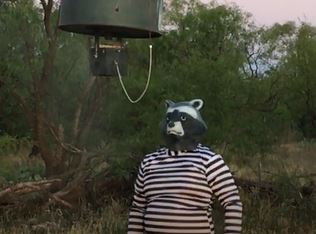
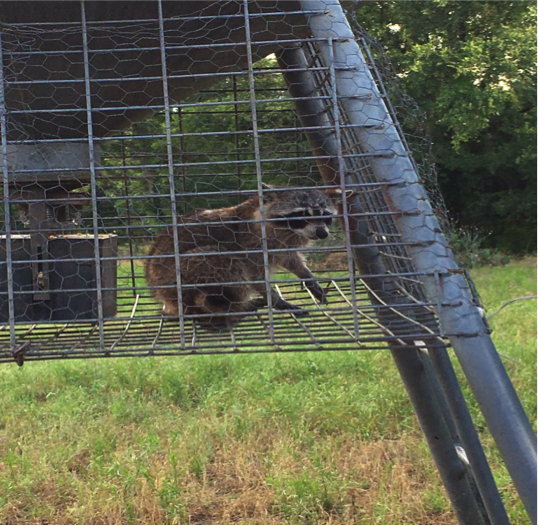
If you get a feeder without a guard or screen you can rig up a varmint cage with some chicken wire or other mesh product that will still let the feed be thrown out but prevent the varmint from sticking its thieving paws inside to spin the mechanism. If you don’t feel like making it yourself you could just buy a pre-made cage and mount it to your feeder.
Do it yourself idea for making a deer feeder
At Rancho Bandido we’ve made several homemade feeders out of discarded ranch equipment over the years. Our favorite feeder to make ourselves is the free choice protein feeder out of used 55-gallon drums.
First we make sure we are using a drum that never contained any sort of toxic chemical or hazardous material such as motor oil, acid or any such thing. You can buy this type of refurbished steel drums relatively easily.
We then go to our local home improvement store or Amazon and buy most of our parts (go to our Recommended Gear page for parts):
- 1-4″x4″x4″ PVC pipe fitting tee hub
- 3-2’x4” PVC pipe
- 2-45 degree 4” PVC elbow hubs
- 1-4” PVC closet flange
- PVC cement & primer
- 55-gallon polyethylene funnel
- 55-gallon barrel band system
- 55-gallon easy open galvanized steel head cover
- 3-6’ metal poles
We’ll have a more detailed “DIY How To” in a subsequent article but the high level process is:
- Thoroughly wash out the inside of the drum and let it dry before putting in any feed.
- Drill a hole in the bottom of the drum large enough to allow the polyethylene funnel to fit snugly with the bottom hole sticking slightly out.
- Place the funnel inside the drum.
- Mount the easy open galvanized steel head cover onto the drum.
- Secure the barrel band system onto the barrel.
- Screw in the PVC closet flange into the outside of the bottom of the drum centering the flange on funnel hole.
- Now place PVC primer and cement liberally on the inside of the flange and outside of one end of a 2’ PVC pipe and insert the pipe into the flange. (Depending upon how tall your feeder legs are you may want to cut that pipe down to where once it is placed into the flange the bottom sits about 3 feet off the ground.)
- Now place PVC primer and cement liberally on the outside of the other end of the PVC pipe and the inside of the PVC pipe fitting tee and place the tee onto the pipe.
- Cut down the remaining 2-2′ PVC pipes to 1′ 6″.
- Now place PVC primer and cement liberally on the inside on both sides of the tree and on the outside of the 1’6” pipes
- Fit the pipes into the tree.
- Now place PVC primer and cement liberally on the other side of each of the 1’6” pipes and place the 45 degree elbow on each end with them pointing up to the sky once the feeder is standing.
- Drill small holes along the bottom of the elbows and attached pipes so as to let the moisture drain if any gets in.
- No put on the legs and stand your feeder upright. You have just created a homemade deer feeder!
- When you deploy the feeder in the field, don’t forget to fill it with feed, of course, and cover it with the easy open galvanized head cover. If we don’t have the easy open cover we like to at least find a heavy rock to place on top just to make sure a strong wind doesn’t blow it off.
We’ve had a lot of success with these protein deer feeders. Be sure to put out a game camera so you can see what is coming to feed. You’ll be very proud. Good luck!
Helpful things to consider when setting up a deer feeder
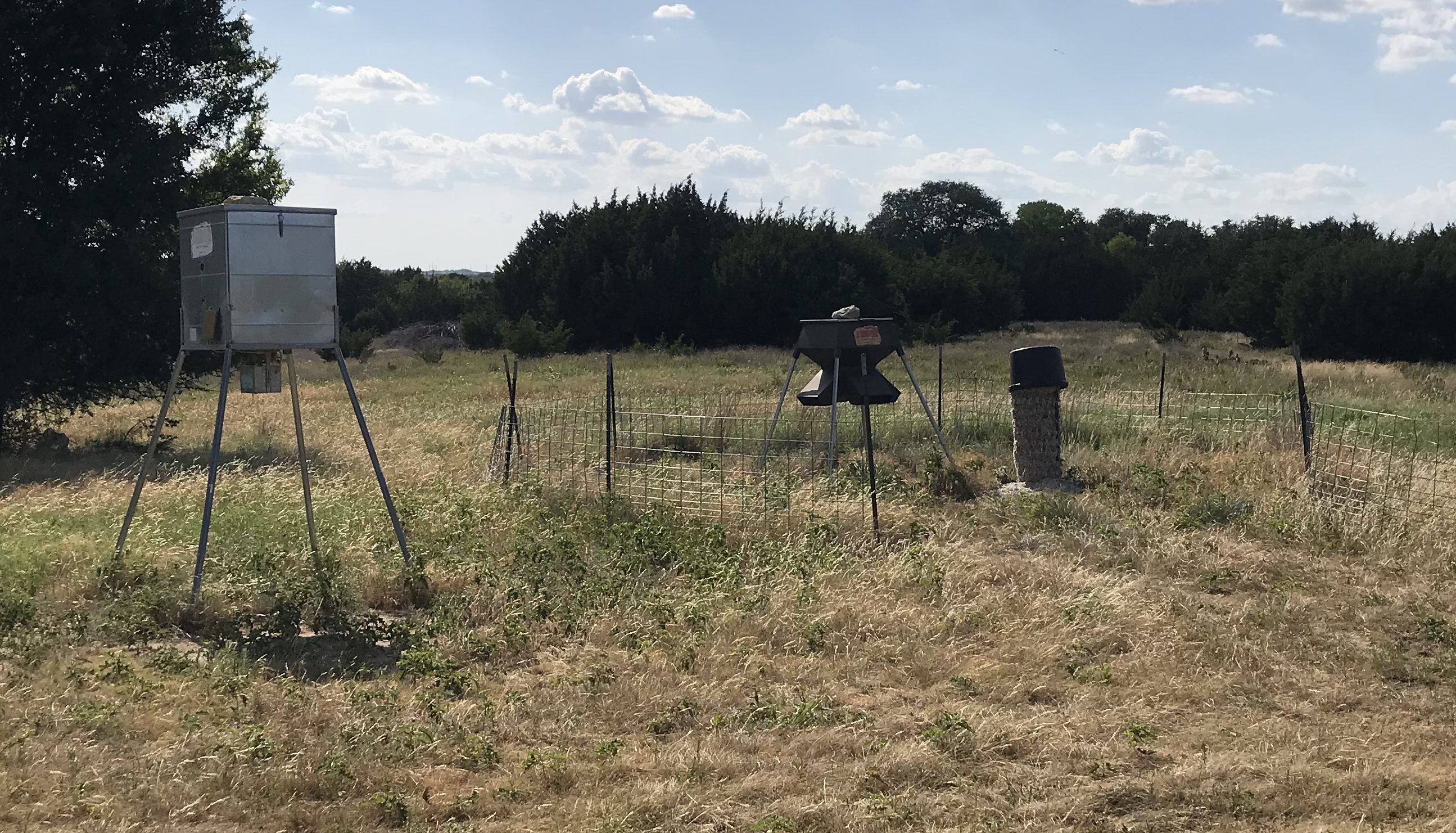
If you are running cattle in the same pasture as your feeder, you may want to put up a pen around the feeder to keep those goofballs away and prevent them from eating all your feed. You can buy some 3’ high cattle panels to build a 15-20’ diameter perimeter around your feeder and the deer will jump them to get to the feed but it will keep out the bovines.
On spinning feeders you’ll want to set the timer correctly and record the feeding times somewhere so you can reference it when need be. Our memories can fail us and this is one area where we’ve forgotten what we set them for more than a time or two.
When setting out a spinning feeder with a solar mechanism be sure to face the panel towards the south and make sure there are no massive trees in the way blocking the sun. Your battery will need to stay charged and the best way to do that is to give it as much sun as possible.
Try to keep out as much moisture from your feeder as possible. Sometimes it is unavoidable but there are some things you can do to help out the situation. Believe it or not simply double checking that you’ve sealed the top of the feeder and any other holes in the reservoir goes a long way.
Also, as mentioned in the DIY feeder above, drilling holes to allow water or moisture to drain could be a good idea. Depending upon the type of feed if it gets wet it could ruin fast. You spend a lot on feed so take time to ensure that it stays dry.
When you first set up a feeder be sure to test the spinning mechanism, timer and battery. These things do fail over time so it is good to make sure they are still running properly at first rather than coming back weeks later to find that nothing has been thrown, the feeder is still full and no animals have gotten into the habit of stopping by when you want them to.
Putting your feeder in the most ideal locations is also important so take some time to survey your land and pick the best and most advantageous spots. Look for spots with good cover for the deer so they’ll feed comfortable that they have an escape route if need be when they come out to the feeder.
If you have other natural food sources or food plots you might consider putting it in the vicinity as the deer are probably already trafficking that area as it is. Also factor in where the deer go for water. A spot close to that area could be a great option too.
If you are putting out more than one feeder take into consideration how close they are to each other. If they are too close they might compete for the same deer but if they are too far away there could be many deer that simply never even come out into a feeder. Bottom line, all land and terrain is different of course but several hundred yards apart at least is sort of the sweet spot.
Always keep in mind why you are feeding and when so as to know the best feed to put into your feeder at any one time. Also, be mindful of the local regulations so you’ll know if you can feed year round or when you have to stop feeding a particular area in order for you to be able to hunt it.
Which feeder is right for me in my scenario?
If you want to see deer at specific points during the day then a timed spin feeder is best. You can program at what time the feeder will distribute the feed as well as how much to distribute.
This has the benefit of predictability and can train deer to come in at specific times for observation or hunting purposes.
Deer corn is typically used with this type of feeder as it can go through more feed than other feeder types and deer corn is typically the least expensive feed. Protein and any other peas, beans or seeds can be used in these feeders as well.
Another option is to use a free choice feeder or gravity feeder which allows game to come in at any time and eat. Typical feed used in a this type is protein pellets due to its cost. An interesting option is to use both feeders next to each other feeding deer corn out of a spin feeder and deer protein out of a free choice gravity feeder at the same time.
This gives your deer the option which could act as an even better attractant and convince them there is no point to moving off property.
Where to find deer feeders
Well you can always search for a supplier and sometimes have to spend a good amount of time looking for a phone number or website of one that is convenient or you can simply use Feed Bandit!
Luckily for you we’ve taken all the inconvenience out of finding the hunting supplies you need, when and where you need them for you!
If you haven’t used it already check out our supplier search. Here you can search for suppliers of deer feed and other hunting products in the area of your choosing or along the route to your land.
We are always adding supplier locations so if you don’t see your favorite supplier in our search results let us know and we’ll add them.
Be sure to check out our recommended gear page to find pics, descriptions and links to purchase the deer feeder gear discussed in this article.
For a discussion on deer feed, check out our article, The Basics of Using Deer Feed, and remember to get familiar with your local regulations prior feeding deer. In the meantime, happy feeding!
